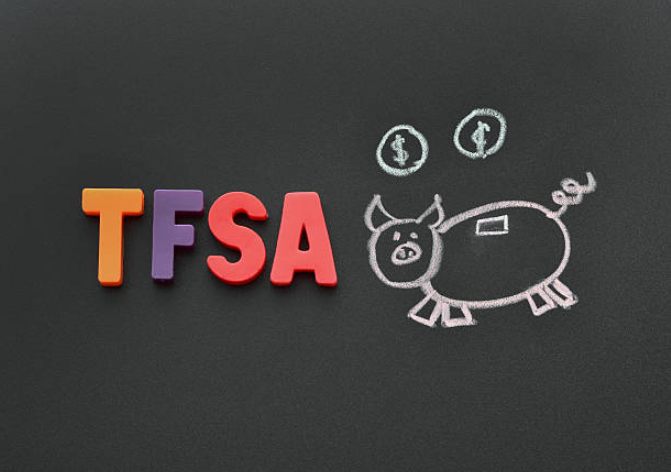
So you’re wondering, how can I retire? Using your TFSA efficiently is one of the ways to do so.
Canadian residents aged 18 and older can open a Tax Free Savings Account (TFSA) and make contributions up to their available limit each year. The contribution limit is retroactive since their inception in 2009. Particular rules govern the dollar amount of contributions that can be made, the re-contribution of funds withdrawn from a TFSA, and the type of investments that can be held in a TFSA. Penalty taxes may be imposed on excess TFSA contributions, contributions made by non-residents, holding non-qualified or prohibited investments in a TFSA, and on the accrual of certain benefits or advantages from a TFSA.
Background
Unlike Registered Retirement Savings Plans (RRSPs), contributions to a TFSA are not tax-deductible. There are, however, significant benefits to holding a TFSA, such as:
TFSA Contributions Limit
You can contribute up to $6,000 annually ($6,000 in each of 2021, 2020 and 2019; $5,500 in 2016, 2017 and 2018; $10,000 in 2015; $5,500 in 2013 and 2014; $5,000 prior to 2013). If you contribute less than the maximum amount in any year, you can carry forward and use that unused contribution room in any subsequent year. The cumulative contribution limit for 2021 is $75,500.
Do not exceed your annual contribution room limit. In general terms, the maximum TFSA contribution room available to an individual is the sum of three amounts:
Certain qualifying transfers and exempt contributions will not result in a TFSA over-contribution. The CRA tracks your contribution room and reports it to you annually as part of your income tax notice of assessment. If you over contribute to your TFSA in a given year by exceeding the maximum contribution room, you will be subject to a 1% penalty tax on the excess amount.
As noted above, you must be a Canadian resident to be able to contribute to a TFSA. If you hold a TFSA and become a non-resident of Canada, you will not be taxed in Canada on income earned in the TFSA, although foreign taxes may apply or on withdrawals from your plan. No contribution room will accrue for any year throughout which you are a non-resident. In the year of your emigration or immigration, the annual dollar contribution limit without peroration applies. Suppose you re-establish Canadian residence, any withdrawals made while a non-resident will be added back to your TFSA contribution room in the following year. A 1% penalty tax will also apply to any contributions you make to your TFSA while you are a non-resident.
Penalty tax on excess TFSA contributions
At the 2021 STEP conference, the CRA commented (in the CRA document 2021-0883221C6) on a specific scenario where a taxpayer moved to Canada in 2021 and then opened a TFSA account. Since he was previously a non-resident of Canada, the taxpayer’s cumulative TFSA contribution room for 2021 was only $6,000 (the contribution limit for the 2021 taxation year). Nevertheless, due to a misunderstanding of the rules, the taxpayer contributed $18,000 to his TFSA and invested the entire amount in shares of one company. Unfortunately, before he had a chance to withdraw the $12,000 overcontribution, the company went bankrupt. As a result, the fair market value of the investment held in the TFSA was now zero.
The CRA was asked whether there was any way it could waive the 1% penalty tax, or if there was any other way the tax could cease to apply, notwithstanding that it was not possible to withdraw the excess contributions since the value of the shares held in the plan was nil. The CRA responded that since it was impossible to withdraw any amounts from the TFSA in this scenario, subsection 207.06(1) did not apply, and the CRA had no authority to waive or cancel the penalty tax. Only new TFSA contribution rooms that would become available to the taxpayer in future years would reduce the excess TFSA amount.
Therefore, assuming that no additional contributions would be made in 2021, 2022 or 2023, and the annual contribution limit was to remain the same at $6,000 per year; the $12,000 over-contribution would be reduced to $6,000 on January 1, 2022, and fully eliminated on January 1, 2023. The taxpayer would be subject to the 1% penalty tax in 2021 and 2022 and must complete Form RC243, Tax-Free Savings Account (TFSA) Return, and remit the penalty tax for each year. The taxpayer could begin making TFSA contributions again in 2024. The CRA did not comment on the calculation of the total penalty tax amount in this scenario. Although it’s not mentioned in the CRA document, assume that in this scenario, the taxpayer became a resident of Canada in July 2021 and made his $18,000 TFSA contribution on September 1, 2021. Although the taxpayer was only a resident of Canada for half of 2021, his TFSA dollar contribution limit for 2021 is $6,000 since the limit is not prorated for the year of immigration.
The penalty tax for 2021 is $480, calculated as the $12,000 over-contribution x 4 (months) x 1%. For 2022, the total penalty tax is $720, calculated as the $6,000 over-contribution x 12 (months) x 1%. In addition to the penalty tax, interest will also be assessed at the prescribed rate plus 4% and will apply from the time the penalty tax is assessed to the time it is paid.
TFSA Conclusion
The CRA’s comments illustrate the importance of complying with the rules pertaining to TFSA contribution limits and the adverse tax consequences associated with not complying with those rules. They also serve as a reminder that contribution room does not accumulate during the period that a taxpayer is a non-resident of Canada.
In addition, it should be noted that the CRA can only waive the penalty on over contributions if certain conditions are met, as noted above. In particular, the CRA is not empowered to grant a waiver where the over contribution cannot be withdrawn from the account.
It’s true, the TFSA is a great way to support your retirement goals! It’s important to know the rules of your TFSA to maximize your wealth for future endeavors!
Posted on 03 Dec 2021


